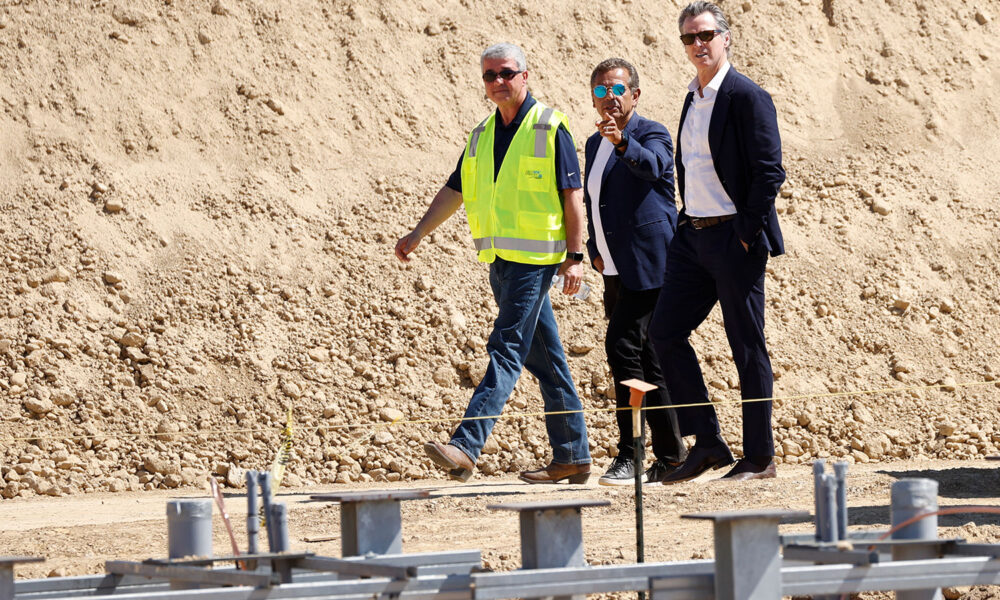After the hottest summer on record, the world continues to witness extreme weather fueled by the burning of fossil fuels. In the United States alone, we’re in the midst of a record-setting hurricane season, with back-to-back destructive hurricanes, Helene and Milton, causing immense destruction in Florida and neighboring states. Both hurricanes were exacerbated by warmer ocean surface temperatures, and are examples of “what hurricanes will look more like in the future,” according to Dr. Marc Alessi, an atmospheric scientist with the Union of Concerned Scientists.
We need to stop burning fossil fuels immediately.
Thankfully, we are in the midst of a much-needed transition away from fossil fuels and towards a future powered by more renewables. This is especially critical now given the unprecedented devastation that natural disasters like Hurricanes Helene and Milton wreak on communities across the country, not to mention the well-documented effects of pollution from fossil fuel refineries on human health. Change is afoot, and being so, I recently caught up with Mark Specht, the Union of Concerned Scientists’ Western States Energy Manager to talk about the state of renewables. In his role, Specht leads research and advocacy efforts in California and other Western states to advance the transition to a less polluting and less carbon-intensive energy system. Below is an abridged version of our discussion.
CWdL: It’s obvious that the way we are powering our lives is unsustainable on so many levels. What’s the latest on the transition to clean electricity?
MS: There is a lot happening on that front, but I’d like to focus on energy storage. To decarbonize the power grid, we’re going to need tons of renewable energy from sources such as solar and wind. We’re also going to need a significant amount of energy storage to save some of that renewable energy for later. On a grid powered primarily by clean energy, energy storage will play a critical role in keeping the lights on when people are using a lot of electricity and renewable energy generation is low. So, I’m really excited about energy storage right now.
CWdL: Why is energy storage so exciting? Have there been recent advances?
MS: The US has made huge strides in deploying battery energy storage over the past few years, going from having almost no battery storage installations in 2020 to skyrocketing all the way up to 20 GW by July 2024. And California is leading the way, with more than half of that battery storage located in the state. This past April, California achieved a substantial landmark victory on the way to achieving its goal of being powered by 100% clean electricity by 2045. California increased its battery storage capacity more than tenfold, surpassing 10,000 megawatts of battery storage, a 1,250% increase since 2019. To put that into perspective, that’s enough to power about 7.5 – 10 million homes. To put that in perspective, the entire state of New York has 7.7 million households, and the entire state of Texas has 10.8 million.
On top of that, we set some new clean energy records in April in California. During 40 days of a 48-day period, clean energy exceeded the demand of the grid compared to only seven days the previous year. And almost 98% of electricity demand in one week was powered by solar.
CWdL: That’s great news. In addition to battery storage, I’ve been thinking more and more about all the electric vehicles hitting the roads and wondering whether we could harness all the batteries in those vehicles to integrate better with the grid. Has there been any progress on that front?
MS: There has: once again in California, which just passed Senate Bill 59, co-sponsored by UCS. This bill was signed into law this September by Governor Gavin Newsom. It is the first law in the country that gives a state agency the explicit authority to require automakers to manufacture electric vehicles (EVs) that can power homes and appliances, and even send electricity back to the grid. This is an exciting precedent. Beyond the convenience of providing power under normal circumstances, EVs enabled with bidirectional charging can also play a significant role in maintaining grid reliability and avoiding blackouts. As blackouts have affected California, some residents have purchased generators that run on diesel and emit health- and climate-harming emissions. Many EV batteries can serve as a viable alternative to backup generators.
With bidirectional charging, energy companies could also incentivize drivers to charge their EVs at times when electricity demand is lower and renewable energy tends to be abundant, and to put power back on the grid when electricity demand is high. Participating EV owners could generate revenue with their EVs and lower their electricity bills.
We’re moving along a positive trajectory, especially given that consumers are choosing electric vehicles in record-breaking numbers, and especially in California, Florida, and Texas. UCS is currently working on a grid modeling analysis related to bidirectional charging and the integration of electric vehicles to the grid to determine how much benefit there is to varying levels of EVs cooperating with the power grid. Stay tuned for that analysis to come out later this year.
CWdL: I’m looking forward to that study! Are there any other technological breakthroughs on the horizon in the world of energy storage?
Yes, my final highlight is about long-duration energy storage. Most batteries on the grid today are designed to discharge for only four hours before they run out of juice. But over the past few years, a handful of long-duration energy storage companies have been breaking onto the scene, creating energy storage technologies that can discharge for twice as long, if not days. By way of example, there are certain technologies that can store energy that will discharge anywhere from 4-100 hours depending on the technology, and it’s not just batteries that can store energy. Compressed air, for example, is one type of energy storage.
Progress in California has been particularly encouraging. California’s Energy Commission is investing in a long-duration energy storage program. These are smaller scale projects that support emerging technologies and could spark innovation in the market for battery storage technologies. It’s early on, but it’s an interesting step in the direction of trying to bring new energy storage technologies to market that provide alternatives to lithium-ion batteries. Recently, California’s Public Utilities Commission (CPUC), announced it’s soliciting 2 GW of long-duration storage as part of a larger 10.6 GW clean energy procurement which its looking to deploy between 2031 and 2037. This would be the biggest investment by far in those new technologies.

